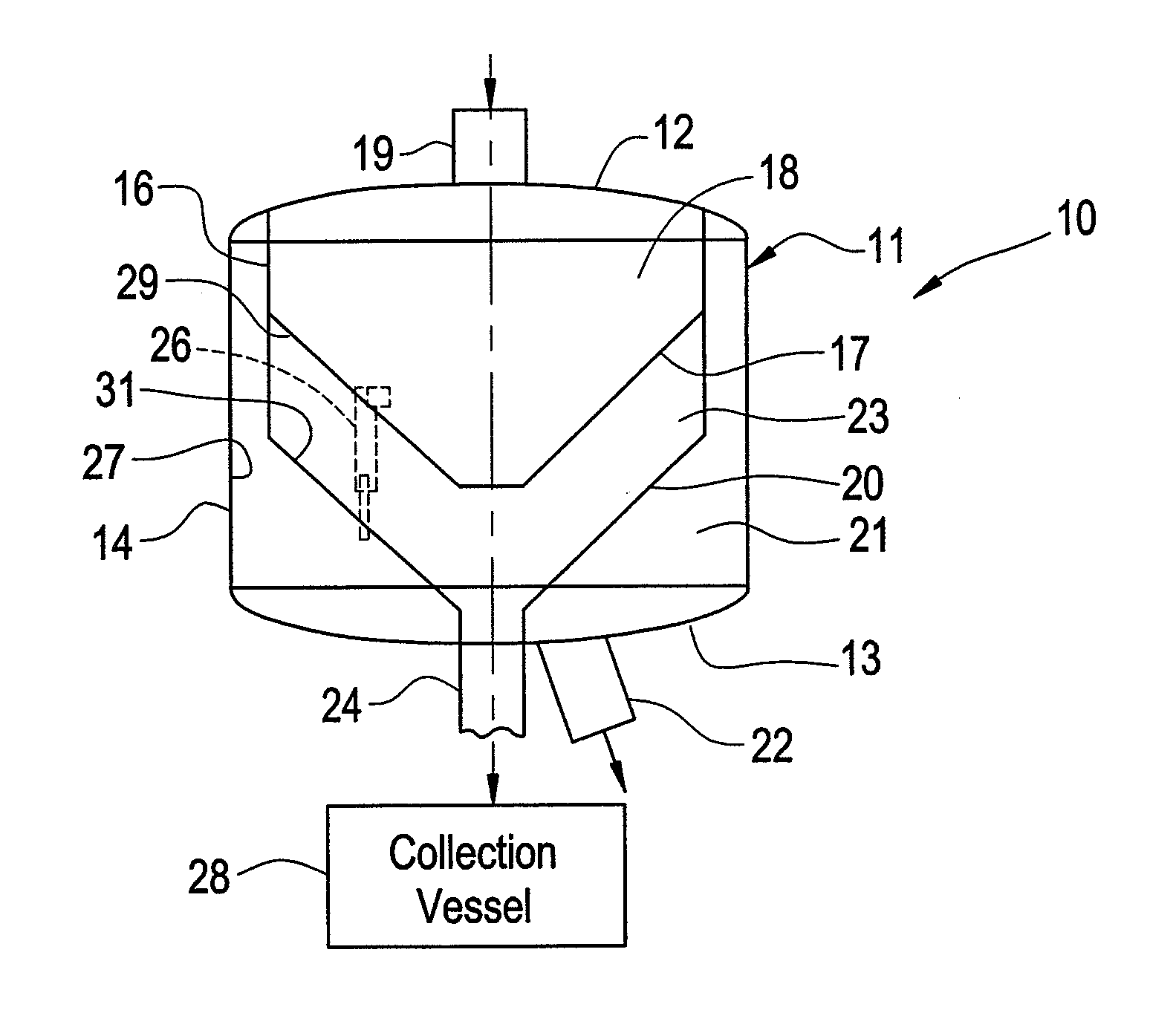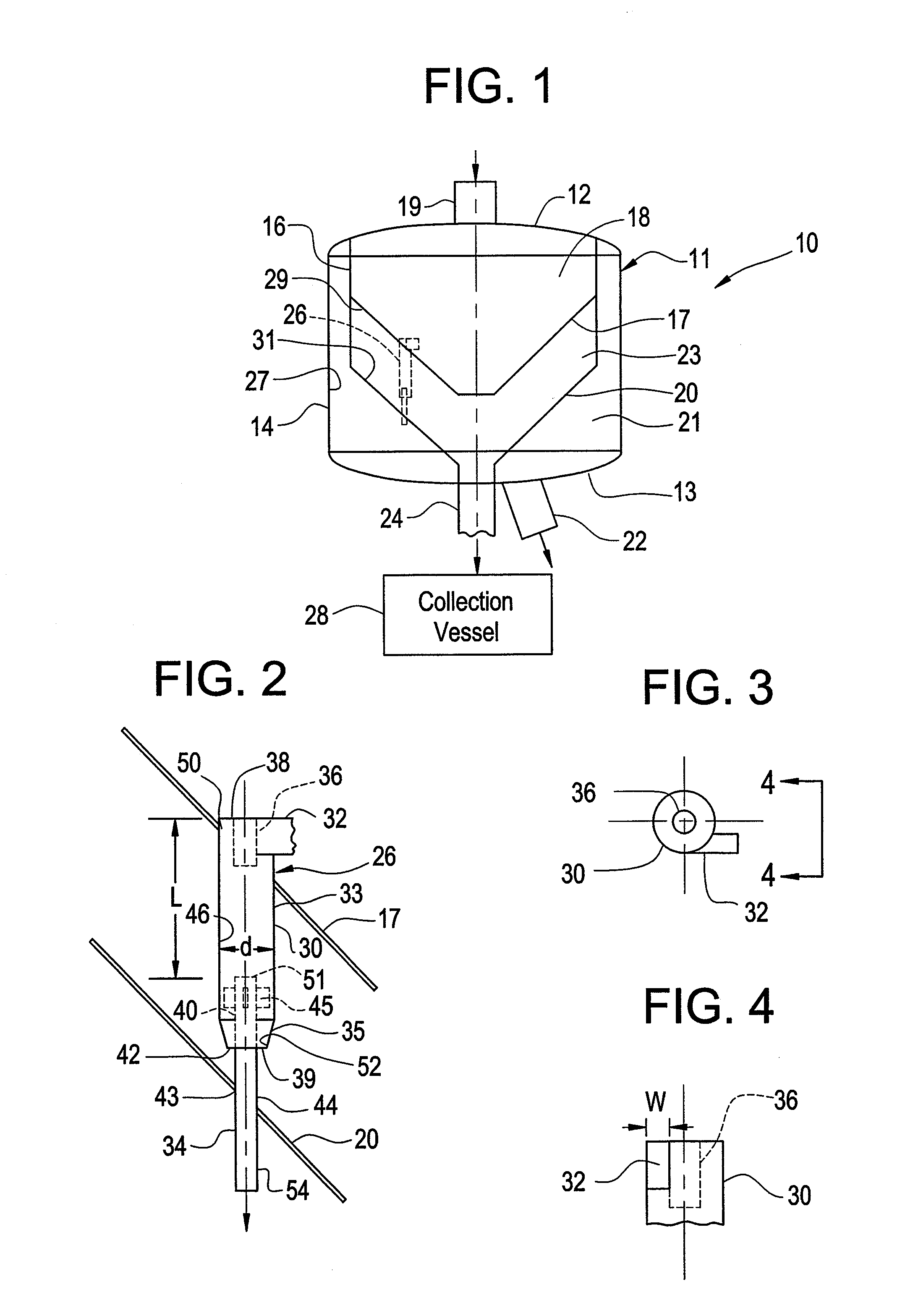Apparatus and Method for Separating Solids from Gas Streams
a technology of apparatus and gas stream, which is applied in the field of apparatus and method for separation of solids from gas streams, can solve the problems of catalyst being so quickly lost from the process, a portion of the catalyst remains suspended in the gas stream, and the early attempts to use a fixed bed of catalyst pellets were largely handicapped, so as to achieve a better degree of separation and improve the effect of operation efficiency
- Summary
- Abstract
- Description
- Claims
- Application Information
AI Technical Summary
Benefits of technology
Problems solved by technology
Method used
Image
Examples
Embodiment Construction
[0029]The embodiments disclosed herein can be employed in any application in which finely divided solids are to be removed from a gaseous stream. The invention is particularly advantageous for use as a third stage separation system for removal of catalyst fines from regeneration flue gas in FCC units, but the scope of the invention is not limited to such use.
[0030]Generally stated, the apparatus includes an upright cylindrical vessel with a plurality of cyclonic elements positioned and oriented within the interior space of the vessel. The vessel is divided by interior baffles into at least three separate chambers. The upper chamber serves as an inlet plenum area for the cyclonic elements; the middle chamber serves as a collection area for the separated solids; and the lower chamber serves as a plenum for collection of the clean gas discharge from the cyclone elements. The baffles are sealed against the vessel wall by appropriate means and the surface of the baffles is angled so that...
PUM
| Property | Measurement | Unit |
|---|---|---|
| velocity | aaaaa | aaaaa |
| diameter | aaaaa | aaaaa |
| particle size | aaaaa | aaaaa |
Abstract
Description
Claims
Application Information
 Login to View More
Login to View More - R&D
- Intellectual Property
- Life Sciences
- Materials
- Tech Scout
- Unparalleled Data Quality
- Higher Quality Content
- 60% Fewer Hallucinations
Browse by: Latest US Patents, China's latest patents, Technical Efficacy Thesaurus, Application Domain, Technology Topic, Popular Technical Reports.
© 2025 PatSnap. All rights reserved.Legal|Privacy policy|Modern Slavery Act Transparency Statement|Sitemap|About US| Contact US: help@patsnap.com


